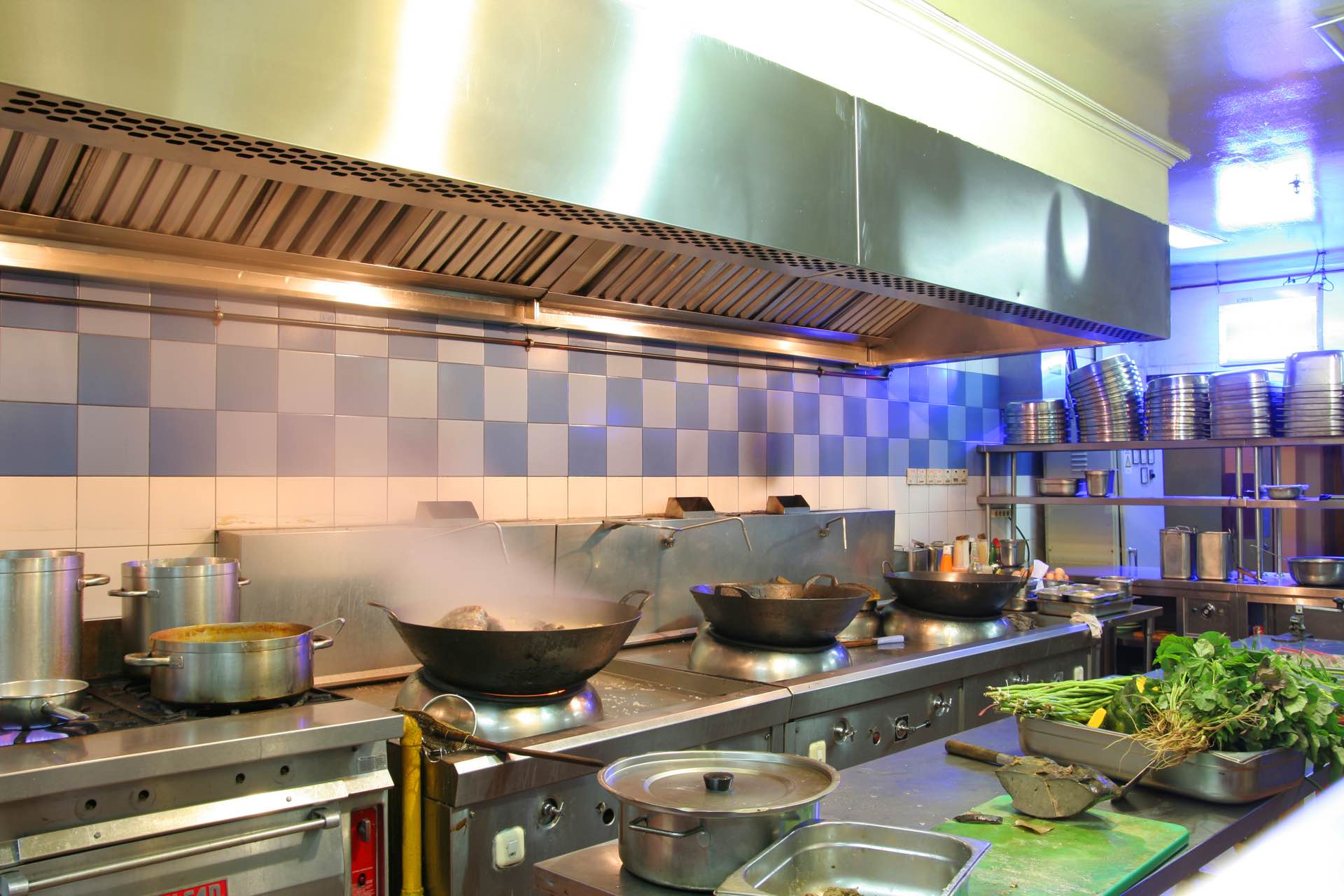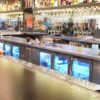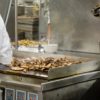Whether you are renovating an existing commercial kitchen or setting up one in a brand-new restaurant, understanding the kitchen’s cooking appliances – specifically the commercial kitchen exhaust hood – is an important decision.
As we’ve previously discussed on the blog, the exhaust hood in a commercial kitchen is the starting point of the commercial kitchen ventilation system. That’s because it must be carefully matched to the type of cooking operation your kitchen will be performing.
Here’s why:
Fire Suppression
If the appliances you are cooking on produce any smoke and grease, your commercial kitchen exhaust hood must be equipped with a fire suppression system. This will allow your establishment to meet any building and fire safety codes.
Removal of Smoke, Heat & Grease
You want to always quickly remove smoke in a commercial kitchen for the health and safety of your kitchen staff. Additionally, smoke not properly removed will eventually migrate into the restaurant’s dining room and drive away potential customers.
As with smoke, it is also important to remove heat from your kitchen to keep staff healthy and safe. Working in an unbearably hot kitchen can cause a host of health issues. Most importantly, removing grease prevents kitchen fires. It also becomes a major cleanliness issue with grease is not properly removed as it can settle on kitchen surfaces and require additional cleaning time of staff.
Odor Control
The last thing you want as a restaurant manager or owner is food odors spreading throughout the restaurant. A commercial kitchen exhaust hood will properly vent the area and remove those questionable odors from the kitchen and restaurant.
Types of Commercial Kitchen Exhaust Hoods
Now that we understand WHY restaurants need vent hood in their kitchen, let’s discuss the two main types of options currently available on the market.
Type 1
Commonly referred to as “grease hoods,” Type 1 hoods are designed to remove heat, smoke, condensation and other by-products of cooking like grease. These types of hoods must be installed at or above all commercial-grade grease or smoke-producing equipment including deep fat fryers, broilers, fry grills, steam jacketed kettles, hot top ranges, ovens, barbeques and rotisseries.
That’s because Type 1 hoods capture the air above appliances. This type of air is mostly made up of grease, food particles and other kitchen debris and must be capture before the air is exhausted to the exterior through a system of ducts. Additionally, Type 1 hoods require regular cleaning to prevent costly and potentially dangerous grease fires.
Type 2
Also referred to as condensate hoods, Type 2 hoods collect and remove steam, vapor, heat, odors and moisture from kitchen appliances that do not produce grease. This includes coffee machines, non-conveying pizza ovens, general ovens and commercial dishwashers.
Type 2 hoods create a more comfortable working environment for restaurant kitchen staff because they help remove excess heat from the air. Additionally, since these types of hoods do not need a grease filter, they can be made from standard galvanized duct instead of fully-welded duct typically used for Type 1 hoods.
Tips for Choosing the Right Commercial Kitchen Exhaust Hood
Finally, once you’ve determine the types of hoods needed in your restaurant or commercial kitchen operation, it’s important to consider the following additional factors:
Hood Exhaust Rate
Measured in cubic feet per minute, or CFM, the amount of exhaust air your vent hood must remove from your cooking space depends on heat, smoke, the amount of grease produced by your cooking appliances and the type of foods you are cooking. Whether you are cooking more fatty foods which create more grease or using an open-flame which will produce a thermal plume, these factors need to be taken into consideration when calculating the exhaust rate for your commercial kitchen exhaust hood.
Hood Design
Not just aesthetically pleasing, the hood design for the commercial kitchen exhaust system is also based on performance and the type of appliance being used during cooking operations.
- Proximity Hoods: These types of hoods are smaller, can be placed closer to cooking appliances and require the least amount of exhaust to be affective. Styles include eyebrow, pass over or back-shelf vent hoods.
- Wall-Mounted Canopy Hoods: These types of hood are mounted on the wall and serve as the exhaust hood for a number of cooking appliances installed against one wall. These hoods are typically very large and require a tremendous amount of exhaust
volume compared to proximity hoods. - Island Canopy Hoods: These types of hoods hang from the ceiling and serve as the exhaust hood for a number of cooking appliances in an island configuration. These hoods will require even more exhaust volume than wall-mounted canopy hoods.
Hood Size & Mounting Height
A correctly-sized hood must be able to handle the entire capture zone of your kitchen’s cooking appliances. This means it should extend beyond the area where appliances are installed to limit the amount of grease and smoke migrating into surrounding areas.
Additionally, the hood must be installed an at appropriate height. A hood installed too low or too high will affect the amount of grease and smoke collected from the cooking appliances.
Hood Ventilation Design
Just as important as the hood itself, the ventilation design has a huge impact on the effectiveness of a commercial kitchen exhaust hood. This means the size and shape of the ducts to the outside, the length of the ducts, the number of ducts and directions of bends needed to properly vent a commercial kitchen can require a higher exhaust rate.
Additionally, if you are installing a Type 1 hood with a fire suppression system, you will need proper insulation and access panels to your ductwork for ease of maintenance later on.
It’s also important to consider make-up air (or MUA) in the ventilation design. This type of system can be installed to ensure that enough fresh air is entering the building to replace the contaminated air that’s being exhausted. Without it, your restaurant can have air balance problems that cause drafts and odors to migrate throughout the building.
For all these reasons (and more), designing a restaurant’s ventilation system in the kitchen requires specific knowledge and expertise. A professional exhaust cleaning company like Halo Restoration Services can help. Additionally, routine system cleaning by a professional will keep your vent hoods free of dangerous grease build-up, preventing fire hazards while prolonging the life of the exhaust system components.




